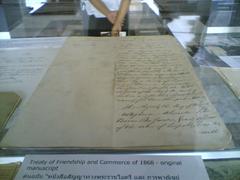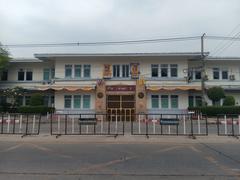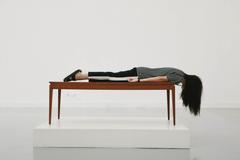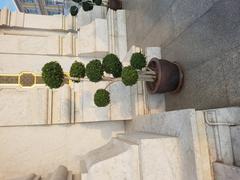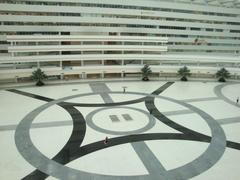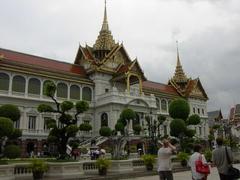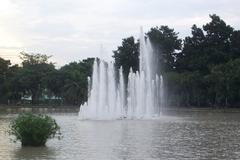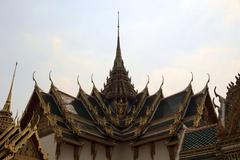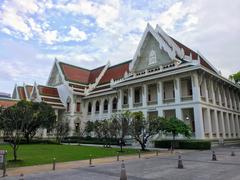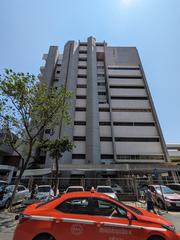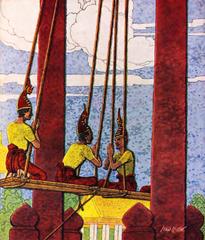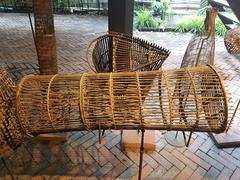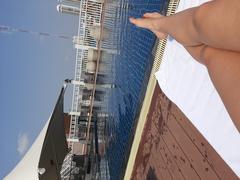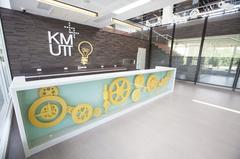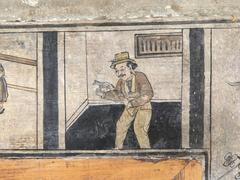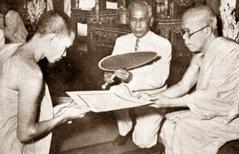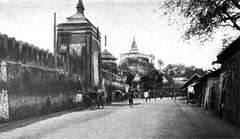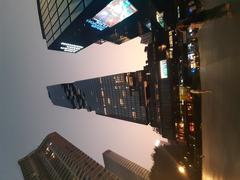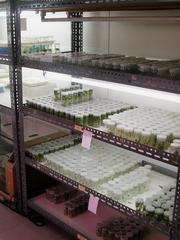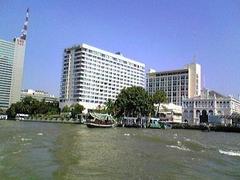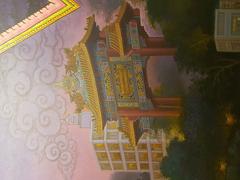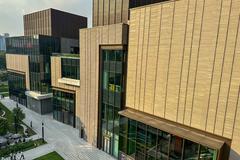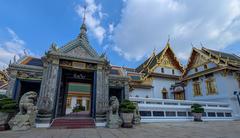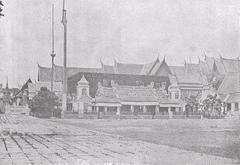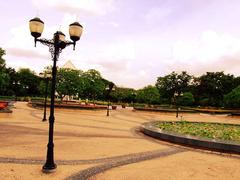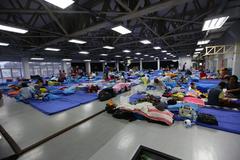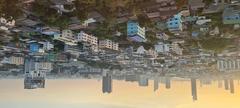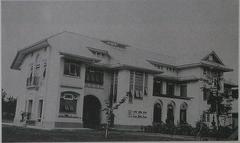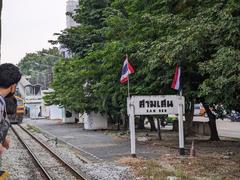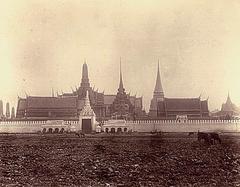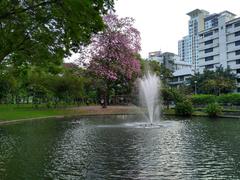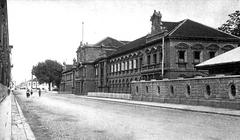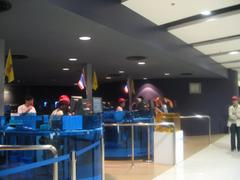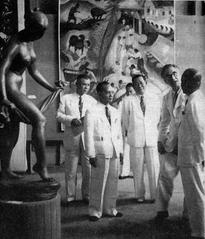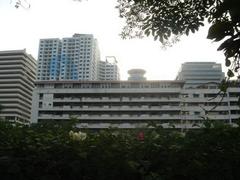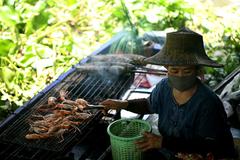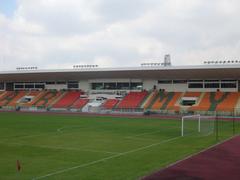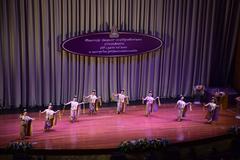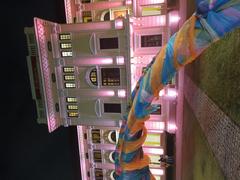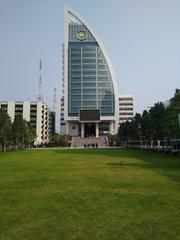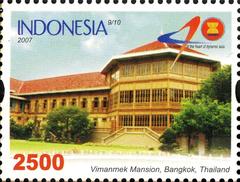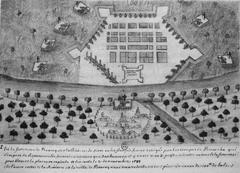พระตำหนักสมเด็จพระปิตุจฉาเจ้าสุขุมาลมารศรี พระอัครราชเทวี
Visiting พระตำหนักสมเด็จพระปิตุจฉาเจ้าสุขุมาลมารศรี พระอัครราชเทวี in Bangkok: Hours, Tickets & Complete Visitor Guide
Date: 04/07/2025
Introduction
พระตำหนักสมเด็จพระปิตุจฉาเจ้าสุขุมาลมารศรี พระอัครราชเทวี (Phra Tamnak Somdet Phra Pitucha Chao Sukhumala Marasri Phra Akkhararatchathewi) is one of Bangkok’s most significant royal residences, reflecting the intersection of Thai tradition, Western influence, and the rich history of the Chakri Dynasty. Nestled within the Grand Palace and Dusit districts, this residence embodies both architectural elegance and deep cultural heritage. This guide offers a detailed look at the residence’s historical context, architectural features, visiting information, and practical tips for maximizing your experience.
Historical and Cultural Significance
Constructed in the late 19th century, the residence was commissioned for Somdet Phra Pitucha Chao Sukhumala Marasri, a distinguished princess and consort of King Rama V (King Chulalongkorn). Her unique status as “พระอัครราชเทวี” (the Queen Aunt) marked her as a key figure bridging generations within the Chakri Dynasty. The construction of this residence reflected the era’s modernization, blending Thai and Western elements as Siam opened itself to global influences while firmly preserving its royal and cultural identity (Tourism Authority of Thailand, Wikiwand).
The residence is not only a testament to royal life but also a site of administrative importance, as Princess Sukhumala Marasri played a central role in royal court management, cultural patronage, and charitable works (ศิลปวัฒนธรรม, Grand Palace History).
Architectural Highlights
Exterior Features
The residence’s architecture represents a harmonious blend of Thai tradition and Western neoclassical elements. Multi-tiered, steeply pitched roofs are adorned with colored glazed tiles and ornate gables, while the lower façade features pastel stucco with pilasters and arched windows. Wide verandas surround the building, supported by columns mixing Thai lotus and Corinthian motifs, and marble steps accentuate the grand entrances (Bangkok Post).
Interior Design
A central reception hall is surrounded by private chambers, demonstrating both ceremonial grandeur and royal intimacy. High ceilings with hand-painted murals, ornate stucco work, gilded mirrors, and imported furnishings create an atmosphere of sophistication. Polished teak floors and Italian marble are used in formal areas, while royal emblems and the Chakri dynasty symbol appear throughout (Thai Architecture, Royal Thai Government).
Gardens and Setting
The residence is complemented by lush gardens featuring frangipani, jasmine, and lotus ponds. Traditional Thai spirit houses and marble-lined pathways enhance the tranquil, regal ambiance (Tourism Authority of Thailand).
Visiting Information
Location
- Within the Grand Palace complex: Na Phra Lan Road, Phra Nakhon, Bangkok.
- Dusit District Residence: Also associated with the Dusit Palace area, near Ananta Samakhom Throne Hall and Vimanmek Mansion.
Opening Hours & Tickets
- Grand Palace opening hours: Daily, 8:30 AM – 3:30 PM. Note that access to the residence itself is limited and typically available only during special events or exhibitions.
- Dusit District residence hours: Usually 9:00 AM – 4:00 PM on select days. Always check the official website for updates.
- Tickets: Grand Palace admission is approximately 500 THB for foreigners (may vary). Special exhibitions or guided tours at the residence may incur additional fees.
- Advance Booking: Recommended, especially for special tours and peak seasons (Grand Palace Visitor Information).
Getting There
- Taxi/Car: Widely available. Ride-hailing apps such as Grab are convenient.
- Public Transport: Nearest BTS Skytrain station is Saphan Taksin for the Grand Palace (with connecting river boat), or Victory Monument for Dusit, then taxi/bus.
- Bus: Several city bus routes serve the area.
- Parking: Limited; early arrival is advised.
Visitor Guidelines
Dress Code
- Shoulders and knees covered (no sleeveless tops, shorts, or torn clothing)
- Closed-toe shoes preferred; sandals with socks accepted
- Remove hats and sunglasses indoors
- Shoes may need to be removed in certain rooms
Etiquette
- Maintain respectful behavior and a quiet tone
- Follow photography restrictions; flash and tripods are not permitted in certain areas
- No food or drink inside exhibition spaces
Facilities and Accessibility
- Restrooms: Available near entry/exit points
- Gift Shop: Royal souvenirs and books available
- Café: Thai snacks and beverages onsite
- Accessibility: Most public areas are wheelchair accessible, though historic sections may have limitations. Notify staff for assistance if needed
Guided Tours and Interpretation
- Guided tours: Available in Thai and English (45–60 minutes)
- Audio guides: Offered in multiple languages
- Interpretive panels and brochures: Available in English, Chinese, and Japanese
Essential Travel Tips
- Arrive early to avoid crowds
- Prepare for security checks
- Carry water, but drink only in designated areas
- Plan to visit nearby attractions: Wat Ratchabophit, Ananta Samakhom Throne Hall, Vimanmek Mansion
- Dress and behave respectfully
Special Events & Temporary Exhibitions
- Royal ceremonies may restrict access; check official event calendars (Royal Thai Government)
- Temporary exhibitions highlight royal history and culture
- Traditional performances and exclusive guided tours are sometimes available
Safety and Health
- COVID-19 protocols may include mask mandates and temperature checks
- First aid facilities and trained staff are available
- Check Ministry of Public Health for updates
Frequently Asked Questions (FAQs)
Q: What are the opening hours for the residence?
A: Generally, 9:00 AM – 4:00 PM on select days. The Grand Palace is open 8:30 AM – 3:30 PM daily. Always confirm before visiting.
Q: How do I buy tickets?
A: Tickets can be purchased onsite or booked in advance via the official website.
Q: Is the site wheelchair accessible?
A: Most areas are accessible, though some historic rooms may be limited.
Q: Is photography allowed?
A: Photography is permitted in many areas but restricted in some; always follow posted guidelines.
Q: What should I wear?
A: Cover shoulders and knees; closed-toe shoes preferred.
Preservation and Education
The residence is actively preserved by the Fine Arts Department and the Bureau of the Royal Household, using a blend of traditional Thai craftsmanship and modern conservation techniques (Fine Arts Department, Thailand). Educational displays and guided tours help visitors appreciate the site’s historical and artistic significance.
Related Attractions
Explore nearby sites for a richer experience:
Visuals and Media
Incorporate high-quality images with descriptive alt text such as “Facade of Phra Tamnak Somdet Phra Pitucha Chao Sukhumala Marasri” and “Intricate interior woodwork.” Interactive maps and virtual tours can further enhance the visitor experience.
Conclusion & Call to Action
พระตำหนักสมเด็จพระปิตุจฉาเจ้าสุขุมาลมารศรี พระอัครราชเทวี is a priceless cultural and historical monument, symbolizing the enduring influence of Thai royal women and the elegant fusion of East and West in architecture and court life. A visit here provides not only a window into royal traditions and art but also a deeper appreciation for the evolution of modern Thailand.
References & Useful Links
- Tourism Authority of Thailand. The Grand Palace
- Wikiwand. สมเด็จพระปิตุจฉาเจ้า สุขุมาลมารศรี พระอัครราชเทวี
- ศิลปวัฒนธรรม. สมเด็จพระปิตุจฉาเจ้าสุขุมาลมารศรี พระอัครราชเทวี
- Grand Palace Visitor Information
- Bangkok Heaven. The Grand Palace in Bangkok, Thailand
- Matichon Academy. ก๊กประนาง-บนเส้นทางพระ
- Fine Arts Department, Thailand
- Thai Architecture
- Royal Thai Government
- History Tools. Unveiling the Majesty of the Grand Palace in Bangkok
